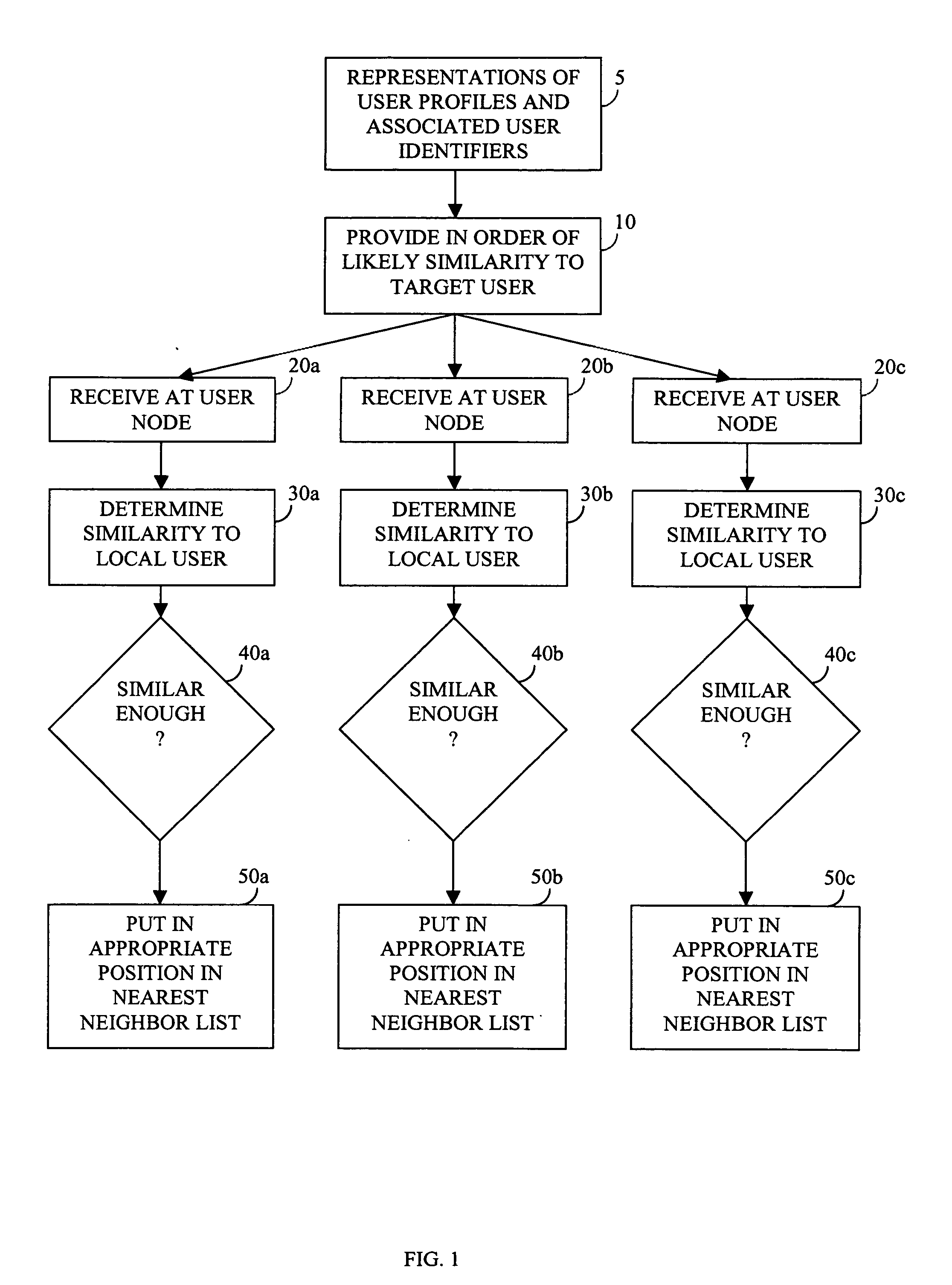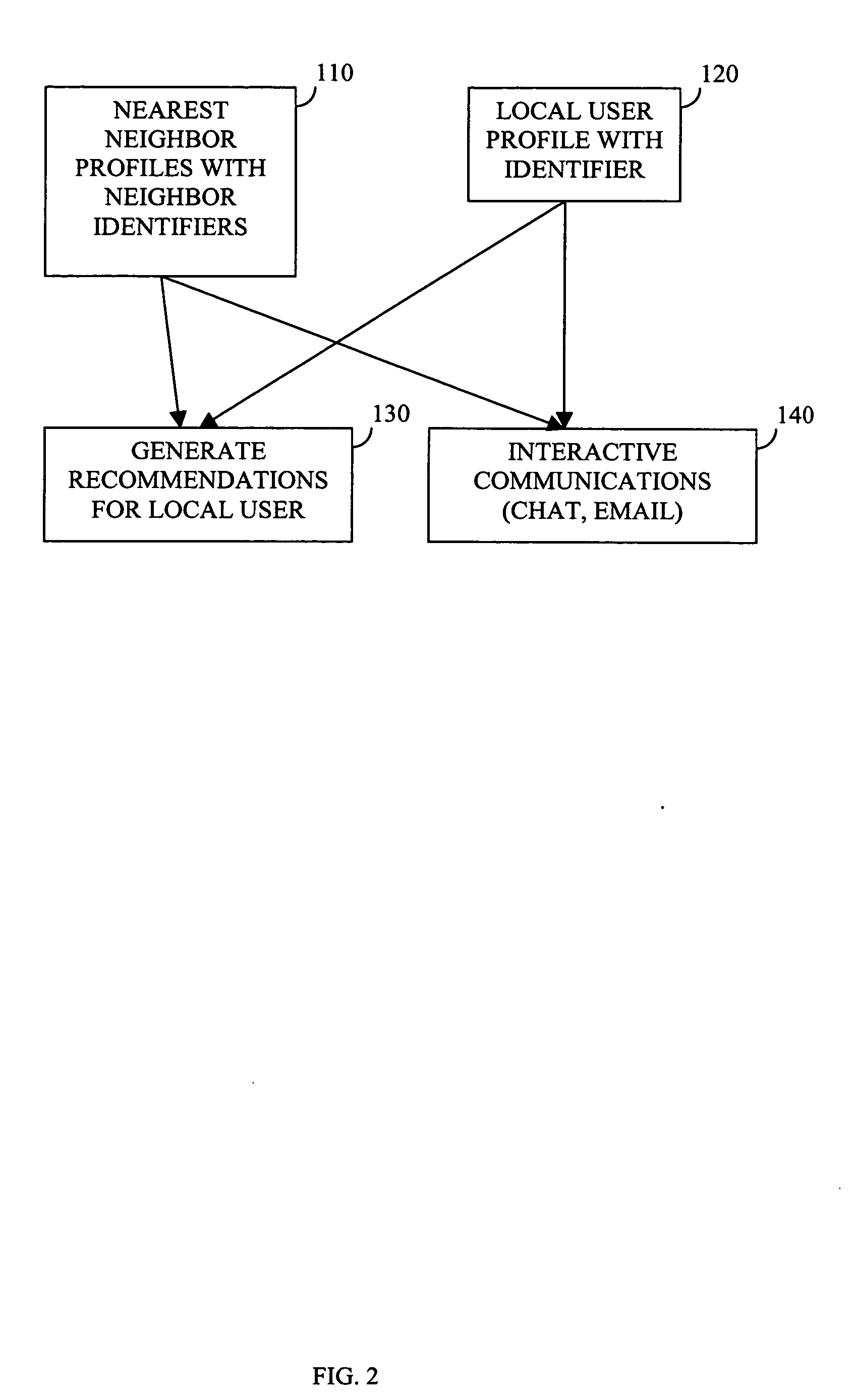Enabling recommendations and community by massively-distributed nearest-neighbor searching
a technology of nearest-neighbor searching and recommendation, applied in the field of enabling recommendations and community by massively-distributed nearest-neighbor searching, can solve the problems of limiting the system's ability, unable to effectively leverage existing solutions, and difficulty in matching people with extremely similar tastes and interests
- Summary
- Abstract
- Description
- Claims
- Application Information
AI Technical Summary
Benefits of technology
Problems solved by technology
Method used
Image
Examples
Embodiment Construction
[1061]FIG. 1 illustrates an embodiment in which each client node is responsible for determining its own user's nearest neighbors. Representations of user profiles and associated user identifiers 5 are provided in order of likely similarity to the user. See, for example, the descriptive text for clusterfitter.py in Appendix 4, which describes a way a client node can determine the order in which to download each one of a set of clusters. (The source code itself appears the computer program listing appendix.) In the preferred embodiment, these clusters are downloaded with the help of other client nodes using BitTorrent. In the preferred embodiment there are a limited number of clusters, retrieved by each client node in its own appropriate order. Not every cluster is retrieved by every client, because only a certain amount of time is available to do the downloads. But on the whole, each can generally, in time, be found on a number of client nodes. This enables a BitTorrent tracker runni...
PUM
 Login to View More
Login to View More Abstract
Description
Claims
Application Information
 Login to View More
Login to View More - R&D
- Intellectual Property
- Life Sciences
- Materials
- Tech Scout
- Unparalleled Data Quality
- Higher Quality Content
- 60% Fewer Hallucinations
Browse by: Latest US Patents, China's latest patents, Technical Efficacy Thesaurus, Application Domain, Technology Topic, Popular Technical Reports.
© 2025 PatSnap. All rights reserved.Legal|Privacy policy|Modern Slavery Act Transparency Statement|Sitemap|About US| Contact US: help@patsnap.com



